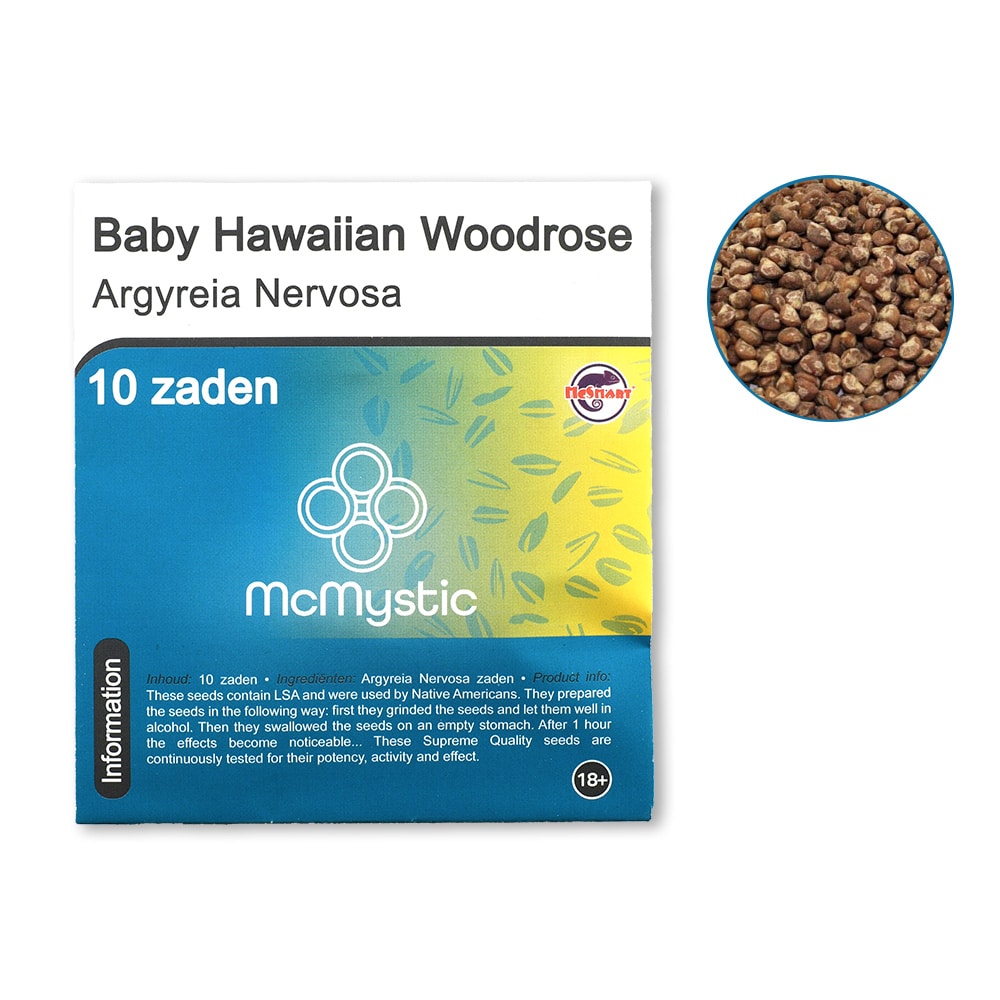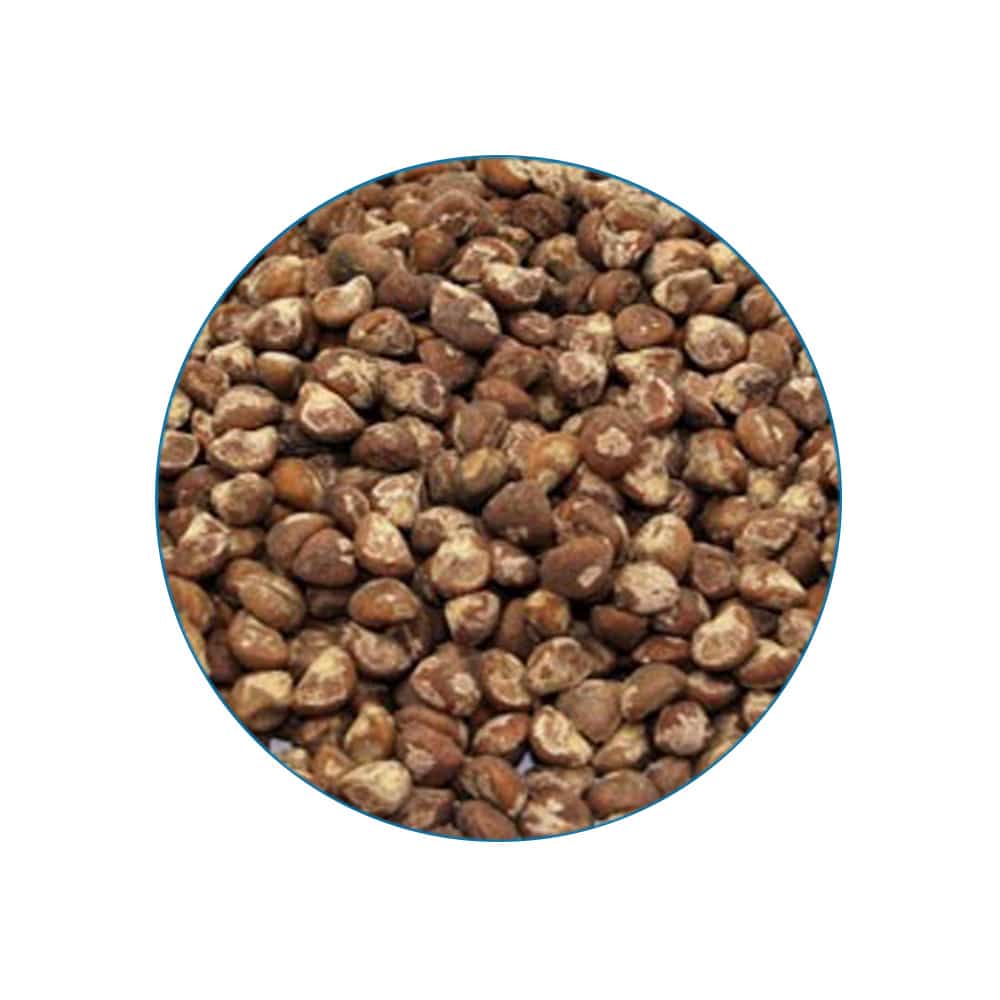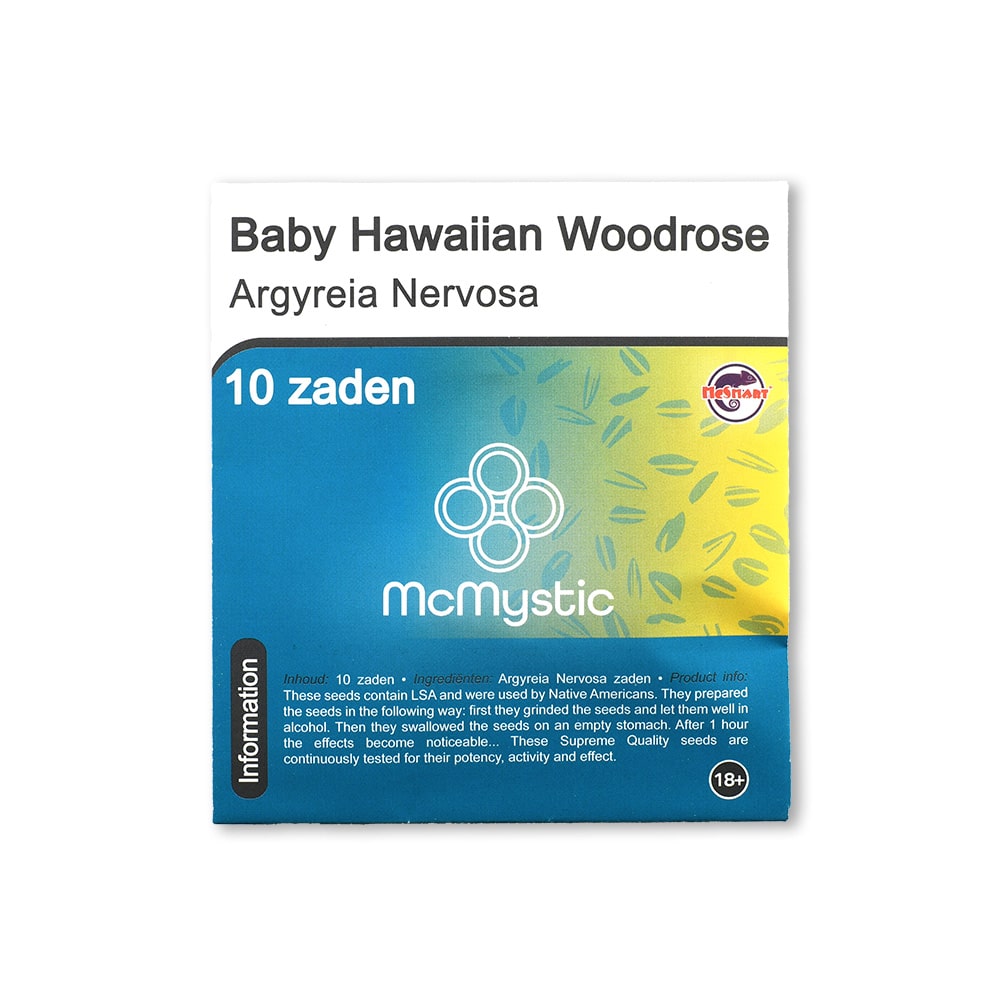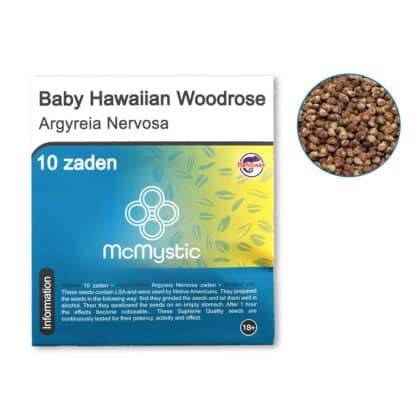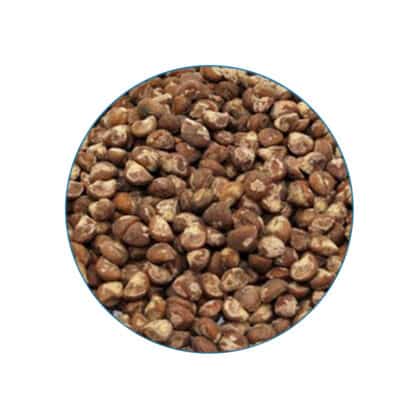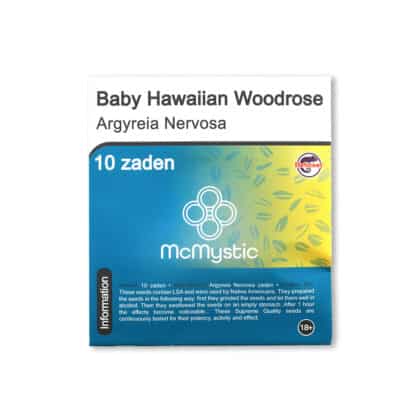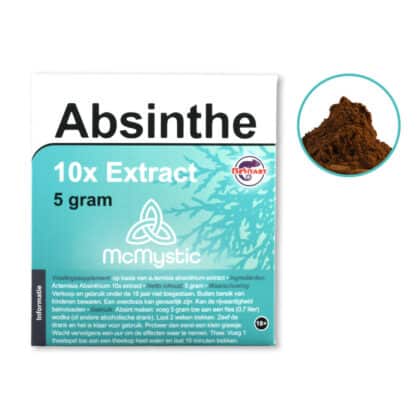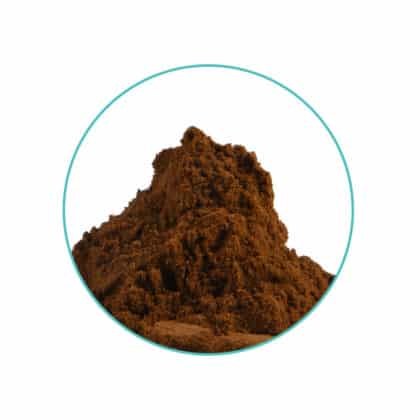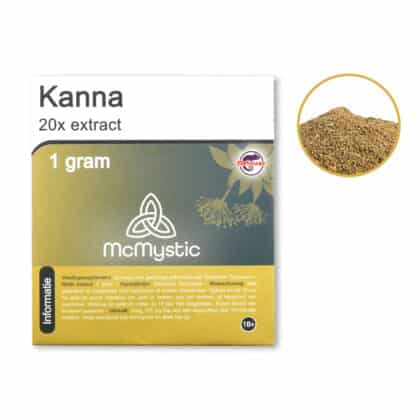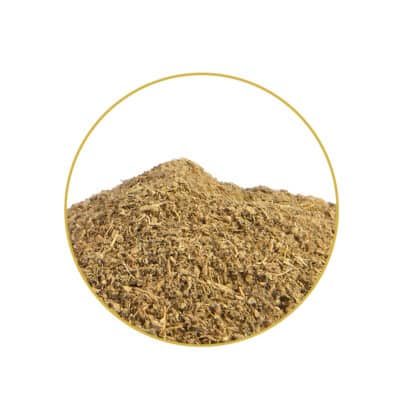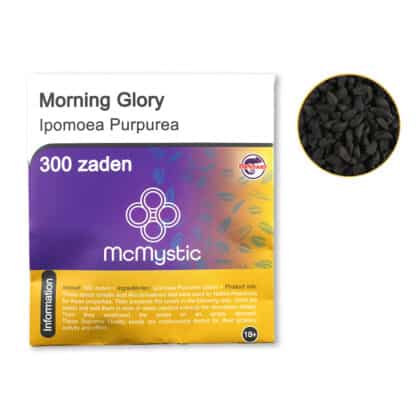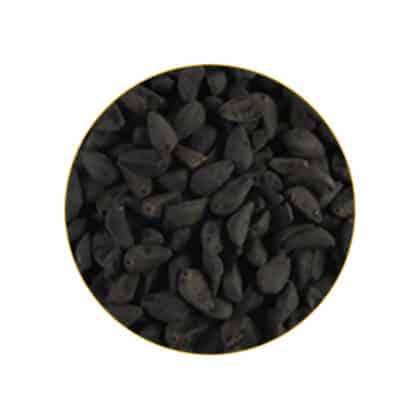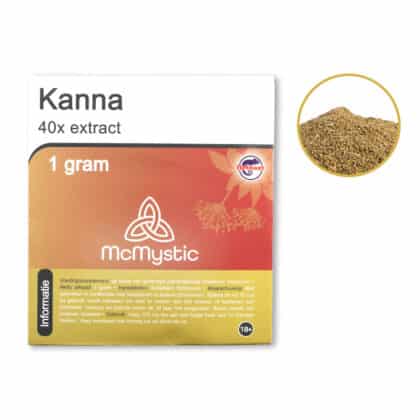Baby Hawaiian Woodrose
€12,50 incl. vat
Argyreia Nervosa, also known as Baby Hawaiian Woodrose, is a plant with seeds that contain LSA, a psychoactive substance. Just six seeds can give you a mild psychedelic experience, marked by vibrant and mystical sensations. Native to India, it has been used for medicinal purposes for centuries, such as treating diabetes, respiratory issues, and arthritis, while also being considered an aphrodisiac. In Hawaii, these seeds are known for their sedative effects and have been part of traditional practices.
What are Argyreia Nervosa Seeds?
Argyreia Nervosa seeds, commonly known as Baby Hawaiian Woodrose, are the seeds of a climbing plant native to India. These seeds contain a psychoactive substance known as LSA (Lysergic Acid Amide), which can induce mild psychedelic effects when consumed. Unlike other hallucinogens, the effects of these seeds are generally mild, without the extreme hallucinations typically associated with substances like LSD. Users often report colorful, vivid, and mystical sensations that create a unique, altered state of consciousness. The plant is used in various ways, including traditional medicine and recreational purposes, offering an intriguing blend of therapeutic and psychoactive properties.
The seeds of Argyreia Nervosa have been a part of medicinal practices for centuries in India. However, the plant became more widely known for its psychoactive properties when it was introduced to the Western world, particularly in Hawaii. Today, Baby Hawaiian Woodrose seeds are used by those seeking both spiritual and recreational experiences. The plant continues to be studied for its rich history and the potential benefits it might offer beyond its mind-altering properties.
History of Argyreia Nervosa Seeds
Argyreia Nervosa has a deep historical connection to both traditional medicine and psychoactive use. Native to India, this plant has been revered for its medicinal qualities for hundreds of years. In ancient India, it was used to treat a range of ailments, from respiratory issues to diabetes and arthritis. Additionally, it was recognized as an aphrodisiac, with some suggesting it had libido-enhancing effects.
The plant gained international attention when it was noticed by Europeans in Hawaii. There, it was not only used for its medicinal properties but also as a sedative. It was during this time that the psychoactive properties of the seeds were observed, which ultimately led to the plant’s popular association with a psychedelic experience. The name “Hawaiian Woodrose” was adopted due to its widespread use in the region.
Later, LSA was isolated by Swiss chemist Albert Hoffman, the same scientist who discovered LSD. After Hoffman synthesized LSA, it was found to naturally occur in certain plants, including Argyreia Nervosa. Among these plants, Argyreia Nervosa contains the highest concentration of LSA, making its seeds particularly sought after for both recreational and medicinal purposes.
How to Use Argyreia Nervosa Seeds
There are various methods of using Argyreia Nervosa seeds, with each method offering a slightly different experience. Traditionally, the seeds are chewed, which helps to release the active compound LSA. This method allows for a gradual onset of effects, typically within an hour of consumption. The effects can last for several hours, and users may experience a sense of euphoria, vivid visuals, and heightened sensitivity to sound and light.
Some users prefer to grind the seeds into a powder and consume them, either by mixing them into food or water, in order to mask the natural bitterness. This method can alter the onset time and intensity of the effects. It is important to note that the experience can vary greatly depending on several factors, including the user’s metabolism, environment, and prior food intake.
It is also advised to approach the use of Argyreia Nervosa seeds with caution, particularly if it is your first time. Start with a small amount to assess your tolerance, and be aware of the context in which you are using them. The setting and your mental state can significantly influence the effects of the seeds. It is always recommended to use them in a safe, comfortable environment, ideally with a trusted person to guide the experience.
Ingredients of Argyreia Nervosa Seeds
The primary active ingredient in Argyreia Nervosa seeds is LSA (Lysergic Acid Amide), a naturally occurring compound that belongs to the same chemical family as LSD. LSA is known for its mild psychoactive effects, which can alter perception and induce a sense of euphoria and visual enhancements. The seeds also contain several other compounds, including alkaloids, which contribute to the plant’s medicinal properties. These additional components may have various effects on the body, such as anti-inflammatory, analgesic, and antispasmodic properties, making the seeds useful in traditional medicine.
Aside from LSA, the seeds contain a variety of other natural substances that are thought to contribute to their overall therapeutic potential. This combination of psychoactive and medicinal compounds is why Argyreia Nervosa seeds have been used for centuries, both for recreational purposes and for their potential to treat various ailments. However, due to the unpredictable nature of the effects, it is recommended to use these seeds responsibly.
In terms of their chemical structure, LSA is a close relative to LSD, but with a less intense psychoactive impact. It is believed to interact with serotonin receptors in the brain, leading to the altered sensory perceptions reported by users. Though the psychoactive effects are milder, they can still offer a unique and introspective experience when used carefully.
Warning:
It is important to be cautious when using Argyreia Nervosa seeds, as they contain a psychoactive compound, LSA. The effects can vary greatly depending on the individual and the method of consumption. Overuse or misuse may lead to unpleasant experiences, and in some cases, there could be adverse health effects. Always ensure that you are in a safe and controlled environment when using these seeds, and start with a small dosage if you are unfamiliar with their effects.
Do you ship to my country?
We ship to most EU countries. You can find these in the table below. We ship all our EU packages with DHL, DPD or PostNL depending on the area. This way we can deliver the best service possible. You will always receive a track and trace code to track your package from door to door.
| Country | Delivery | Costs | Free shipping |
|---|---|---|---|
| Austria | 2 - 3 | €11,95 | €125,- |
| Belgium | 1 - 2 | €7,95 | €125,- |
| Bulgaria | 6 - 8 | €21,95 | €125,- |
| Croatia | 3 - 5 | €17,95 | €125,- |
| Czech Republic | 2 - 4 | €13,95 | €125,- |
| Estonia | 4 - 6 | €19,95 | €125,- |
| France | 2 - 3 | €10,95 | €125,- |
| Germany | 1 - 3 | €7,95 | €125,- |
| Greece | 6 - 8 | €21,95 | €125,- |
| Ireland | 3 - 4 | €16,95 | €125,- |
| Italy | 2 - 4 | €18,95 | €125,- |
| Latvia | 3 - 5 | €15,95 | €125,- |
| Lithuania | 3 - 5 | €22,95 | €125,- |
| Luxembourg | 1 - 2 | €11,95 | €125,- |
| Netherlands | 1 - 2 | €6,95 | €125,- |
| Poland | 2 - 3 | €14,95 | €125,- |
| Portugal | 3 - 4 | €20,95 | €125,- |
| Romania | 3 - 5 | €17,95 | €125,- |
| Slovakia | 3 - 5 | €17,95 | €125,- |
| Slovenia | 2 - 3 | €17,95 | €125,- |
| Spain | 2 - 3 | €14,95 | €125,- |
* Difficult to reach areas like Islands or other remote regions will cost around €20,- more due to additional carrier fees.
Note: We try to ship all orders within 1 working day, all delivery times are estimated and can vary because of traffic and holidays.

